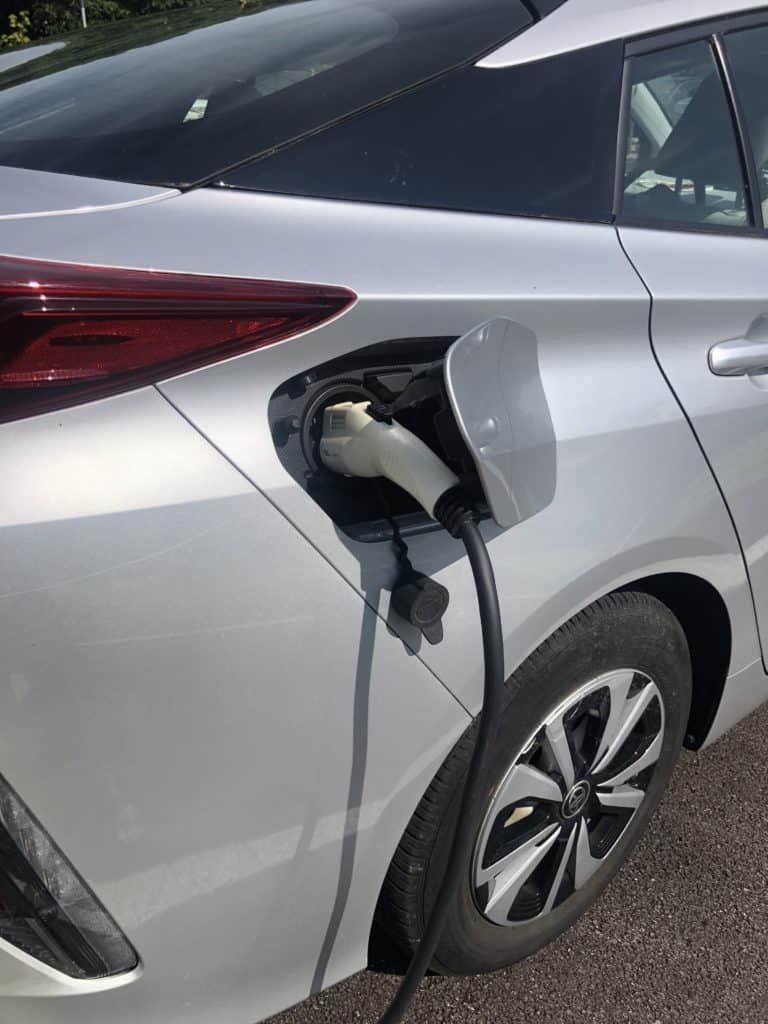Anne Arundel Makes Commitment to Clean, Green Vehicles

A greener Chesapeake may start with plugging in. Anne Arundel County will begin converting its fleet of vehicles to fully-electric models over the next few years in the name of efficiency, cost and environmental impacts.
Anne Arundel County Executive Steuart Pittman directed the office of Central Services to replace conventional vehicles in the fleet—which numbers more than 1,600—to more efficient models where possible.
“We realized we don’t have a single hybrid vehicle in the fleet,” says Matt Johnston, Pittman’s environmental policy director. “We have an obligation to the environment, to citizens and the fiscal responsibility to at least get hybrid vehicles.” A hybrid vehicle uses a mixture of electric and fuel sources.
“80 percent of greenhouse gas emissions worldwide are due to transportation,” says Elvia Thompson, president of Annapolis Green, an Annapolis-based non-profit advocating for electrification of cars, trucks, and buses to mitigate the effects of climate change.
Thompson points out that the grid for electric vehicles already exists. “Utilities are preparing for the near future when electric vehicles will be the ride of choice for everyone,” she says. “The car and truck manufacturers, and even the bus manufacturers, are preparing. At the moment the upfront cost can be somewhat higher, depending on the model, but the long run operation of electric vehicles is cheaper.”
Earlier this year, the Anne Arundel County Library installed five BGE electric vehicle charging stations outside of the Michael E. Busch Annapolis Library.
“The county is working with BGE to install a number of charging stations on publicly-owned property as part of a broader push to electrify transportation in the county,” Johnston says.
The conversion of the fleet will be a gradual process. By 2032, all non-emergency light and medium-duty vehicles purchased must be all-electric models, and by 2037, all light and medium-duty emergency vehicles purchased must be all-electric models.
“An item will be requested in the budget to study what it will take to service an all-electric fleet,” Johnston says. “It would include requirements such as training, charging and infrastructure.”
The Office of Central Services has been tasked with producing an annual report with performance metrics and recommendations that will allow the program to be adapted as needed. The group will also develop strategies to reduce greenhouse gas emissions from heavier vehicles such as vans, trucks and heavy equipment.
“There is little to no maintenance and there is no expense for gasoline or diesel associated with electric vehicles,” Thompson says. “Best of all, though, is the benefit to the atmosphere and public health.”
The State of Maryland agrees and is setting the pace. Maryland is committed to having 300,000 plug-in vehicles—currently, there are about 30,000 in the fleet—on the road by 2025.
